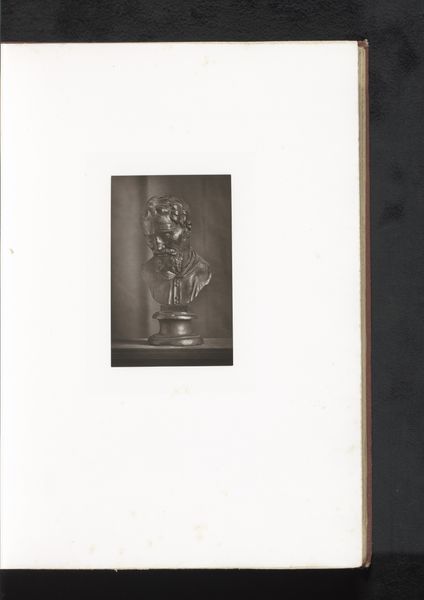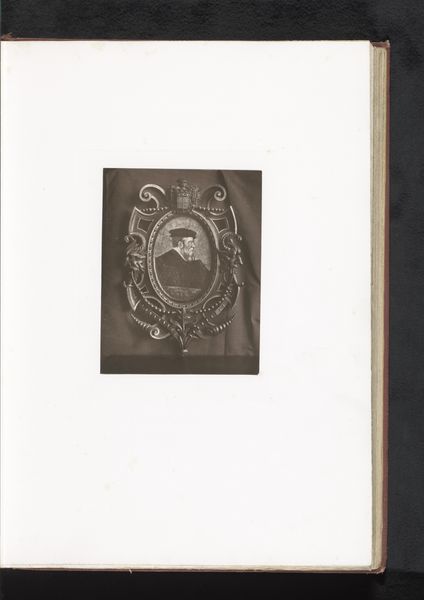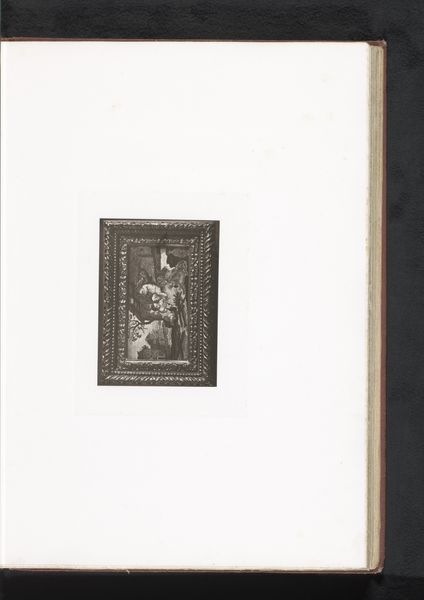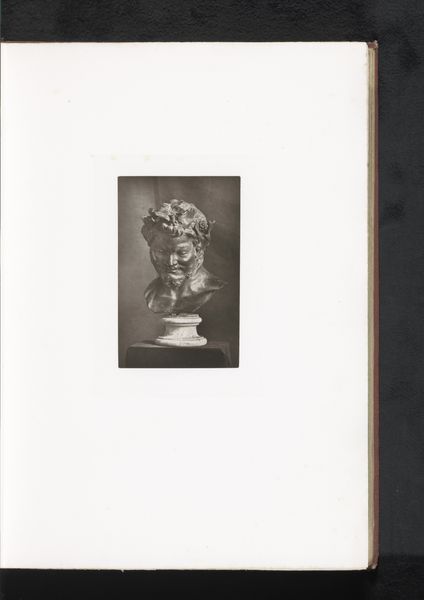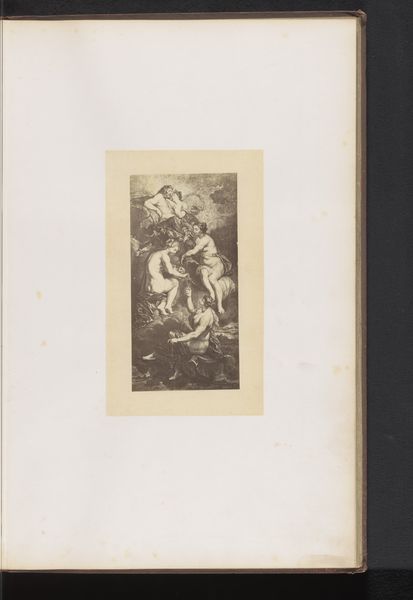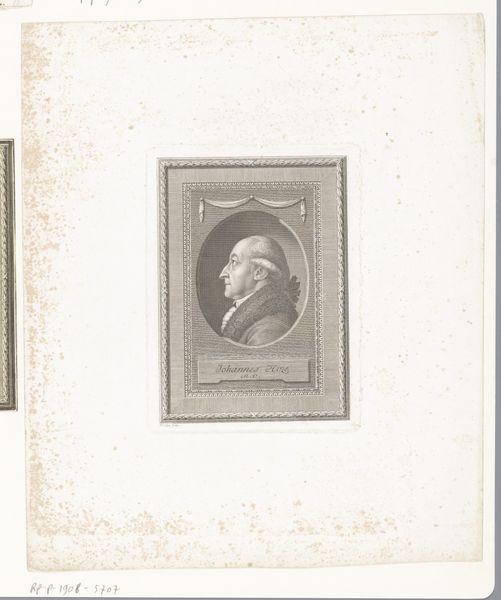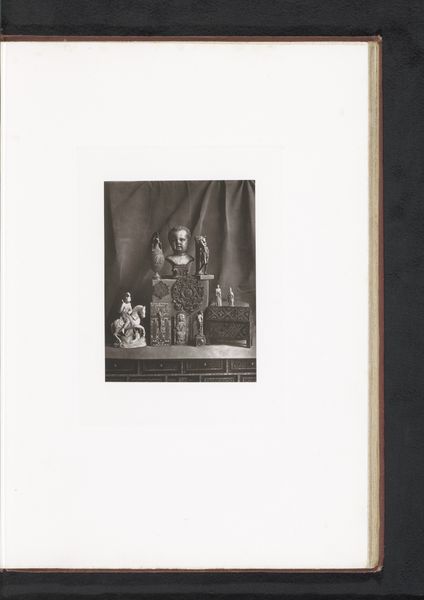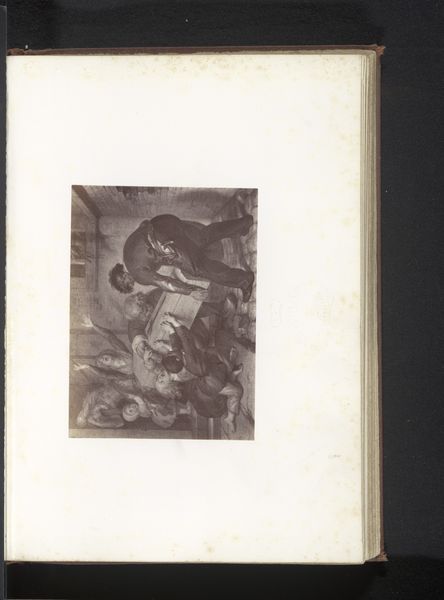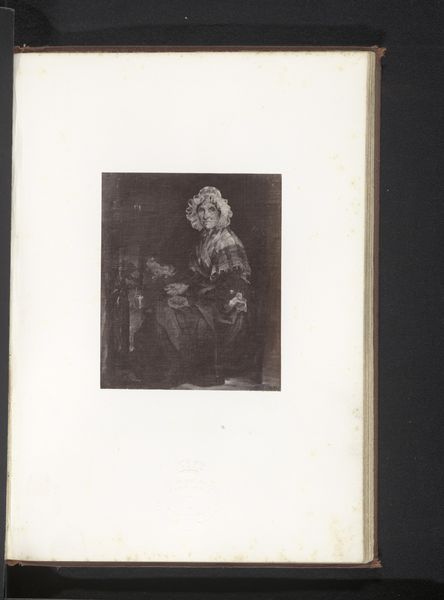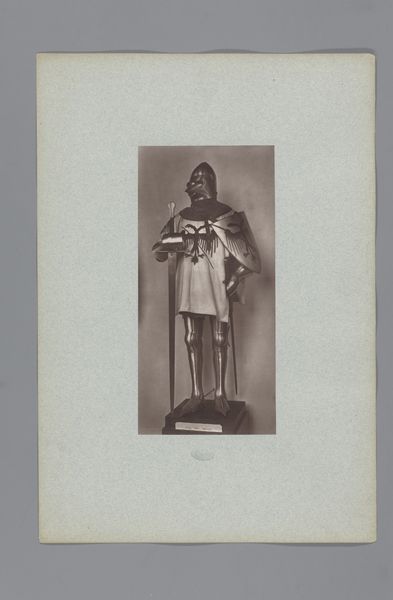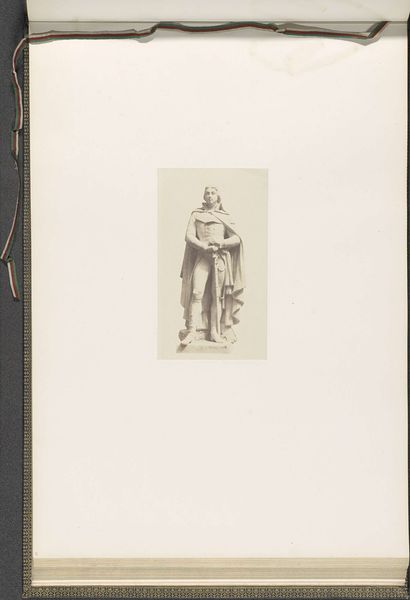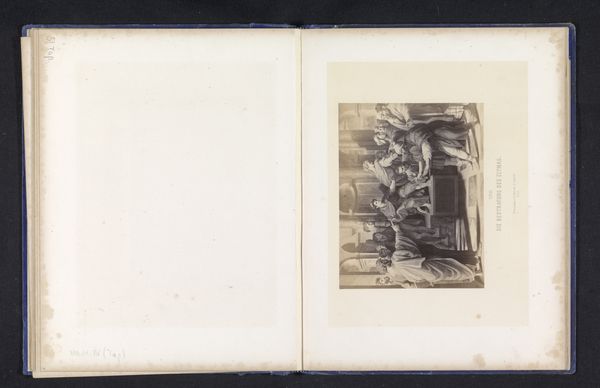
Buste van Hendrik IV van Frankrijk, opgesteld tijdens de Exposition Rétrospective van 1873 in Tours, Frankrijk 1873
0:00
0:00
print, metal, photography
#
portrait
# print
#
metal
#
photography
#
history-painting
Dimensions: height 195 mm, width 126 mm
Copyright: Rijks Museum: Open Domain
Curator: Before us is a photograph dating from 1873 by Gabriel Blaise. It captures a bronze bust of Henri IV of France, which was displayed during a retrospective exhibition held in Tours, France. Editor: My initial impression is one of stark formality, but the angle and soft light lend the subject a certain approachable quality. The limited tonal range concentrates the focus, but it’s more melancholic than grand. Curator: Agreed. There is a deliberate composition at work. Notice how the sharp details of Henri's face and armor contrast with the softened background? The photograph’s monochrome palette emphasizes form and texture over pure imitation. It elevates a common historical image to an aesthetic exercise. Editor: Well, Henri IV’s image was carefully cultivated. As a protestant King who became Catholic to bring peace to the nation, he was seen as embodying national unity. This bust, in the context of that retrospective, serves to call upon that symbol during times of political tension. The details of the armor are themselves quite symbolic of military and monarchical power, aren’t they? Curator: Absolutely. We can analyze that quite explicitly, looking to his upward gaze or the sculptural details on the gorget, which enhance his nobility, adding verticality and directing our vision to his countenance. The sculptor – captured through Blaise’s lens – has deliberately staged these symbols. Editor: It’s all very staged. I’m drawn to how Blaise's choice of photography, as a then-modern medium, engages in a visual conversation with sculpture, an older established medium. There’s tension created by its very modern, reproducible method depicting this object so central to cultural memory. Photography asserts its own form of capturing history. Curator: Precisely. It reframes and recasts our very notion of historical presence. In examining the work, there's also something powerful to say about the way it employs various historical and political themes into a clear visual structure and set of compositional relationships. Editor: Ultimately, viewing the work from 1873 with today’s eyes creates an extra dimension. The past representing the past through an early new medium. Fascinating. Curator: Indeed. The confluence of material, motif, and composition opens up layered conversations about representation and reception of the historical figure.
Comments
No comments
Be the first to comment and join the conversation on the ultimate creative platform.
